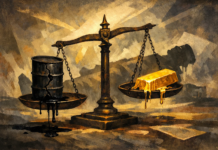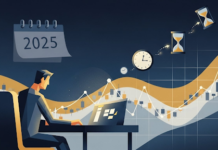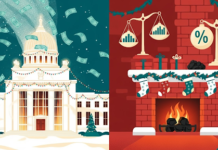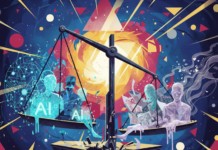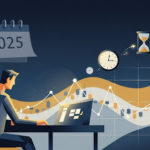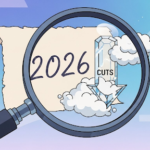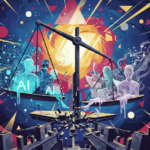When Markets Sneeze and Tariffs Bring the Cold
The markets are speaking loudly — the question is, who’s listening?
In a week that saw U.S. equities slide into correction and bear market territory, it wasn’t inflation, earnings, or even interest rates that lit the fire. It was Trump’s tariff barrage, and the echo is reverberating through Wall Street with the subtlety of a freight train. The Dow dropped, the Nasdaq faltered, and the S&P 500 is teetering on nervous footing, all thanks to growing fears that a global trade war is not only likely — it’s underway.
This edition of The Market Pulse breaks down what’s happening, what’s not happening (hint: Fed support), and what might come next. In today’s Main Topic, we explore why tariff tantrums are rattling investor confidence, and why “wait and see” might be the worst policy of all. In This Week I Learned, we dig into how uncertainty has become the most dangerous market force. And don’t miss The Fun Corner, where we drop a market joke that’s almost as twisted as recent headlines.
Markets aren’t crashing — they’re recalculating. The big question? Who will blink first.
This Week I Learned…
Tariffs, Tantrums, and the Power of Uncertainty
This week I learned that uncertainty is no longer a side effect of policy — it is the policy.
The current market unrest isn’t just about tariffs themselves — it’s about not knowing where they’ll land, how high they’ll go, or when they’ll stop. Investors and executives alike are fumbling through the fog with zero forward guidance. And as Fed Chair Jerome Powell clearly stated, they’re waiting too — waiting for “greater clarity” that might never come.
We’ve seen this before. The 1987 market crash, though far worse in speed and scale, similarly led to shifts in how central banks respond to crisis. But today’s situation is uniquely murky. Markets are rattled not by economic data, but by policy made on impulse — tariffs slapped without strategy, retaliation from China fast and sharp, and no endgame in sight.
It turns out, in financial markets, not knowing is worse than bad news. Because when visibility disappears, the default mode becomes fear.
So yes — this week I learned that tariffs may set the fire, but uncertainty fuels the inferno.
The Fun Corner
This Joke’s on the Market
Why did the stock market go to therapy?
Because it had too many unresolved tariff issues.
But seriously — here’s something to chew on: The word “tariff” comes from the Arabic “ta‘rīf”, meaning “to notify or make known.” Ironic, isn’t it? Given that right now, the biggest market issue is how little anyone knows about what’s coming next.
In a time when markets are desperately seeking clarity, we’re being hit with policies that do the exact opposite. No wonder the Dow is feeling depressed.
Tariff Tantrum: How Uncertainty is Unraveling the Market
The U.S. stock market just flinched — hard. And it’s not just reacting to numbers, but to narratives that are shifting with every press conference. President Trump’s sweeping tariff policy — including a proposed 10% minimum levy on imports, rising sharply for China and the EU — has rattled the investing world and pushed J.P. Morgan’s recession forecast to 60%.
What we’re witnessing isn’t just a correction — it’s a trust problem. The markets no longer know what Washington will do next, and that’s triggering comparisons to 1987’s Black Monday and even whispers of a 2008-style panic.
What’s worse? The Federal Reserve is holding steady, unwilling to cut rates prematurely, and choosing to “wait for clarity.” Meanwhile, investors are staring down a market where corporate earnings may fall, supply chains are unraveling, and bank guidance is non-existent.
Economists warn we may be driving blind — “a dark road without headlights,” as one strategist put it. And while history shows markets can recover from shocks, it usually takes clear leadership or policy reprieve to stem the bleeding. Neither is in sight.
This isn’t about whether tariffs are good or bad. It’s about volatility born from unpredictability — a market that can’t price in tomorrow, because tomorrow might change by tweet.
The Last Say
Waiting for the Blink
This week, the market didn’t crash — it called a bluff.
The historic two-day slide that shoved the Dow into correction and the Nasdaq into a bear zone wasn’t driven by data, it was driven by drama. Investors are tired of waiting. Tired of vague guidance, sudden policy swings, and the looming threat of a protracted trade war.
While Powell waits for clarity, the market is sending its own message. And it’s not subtle. Recession odds are climbing, confidence is cracking, and all eyes are on the next move — not from the Fed, but from the White House.
“Somebody has to blink first,” said Peter Cardillo. And that’s the real tension here. Tariffs are hurting, uncertainty is damaging, and in the end, the only fix may be political, not financial.
Until then, investors should tighten their filters and broaden their horizons. Volatility is back — and it’s not leaving quietly.

